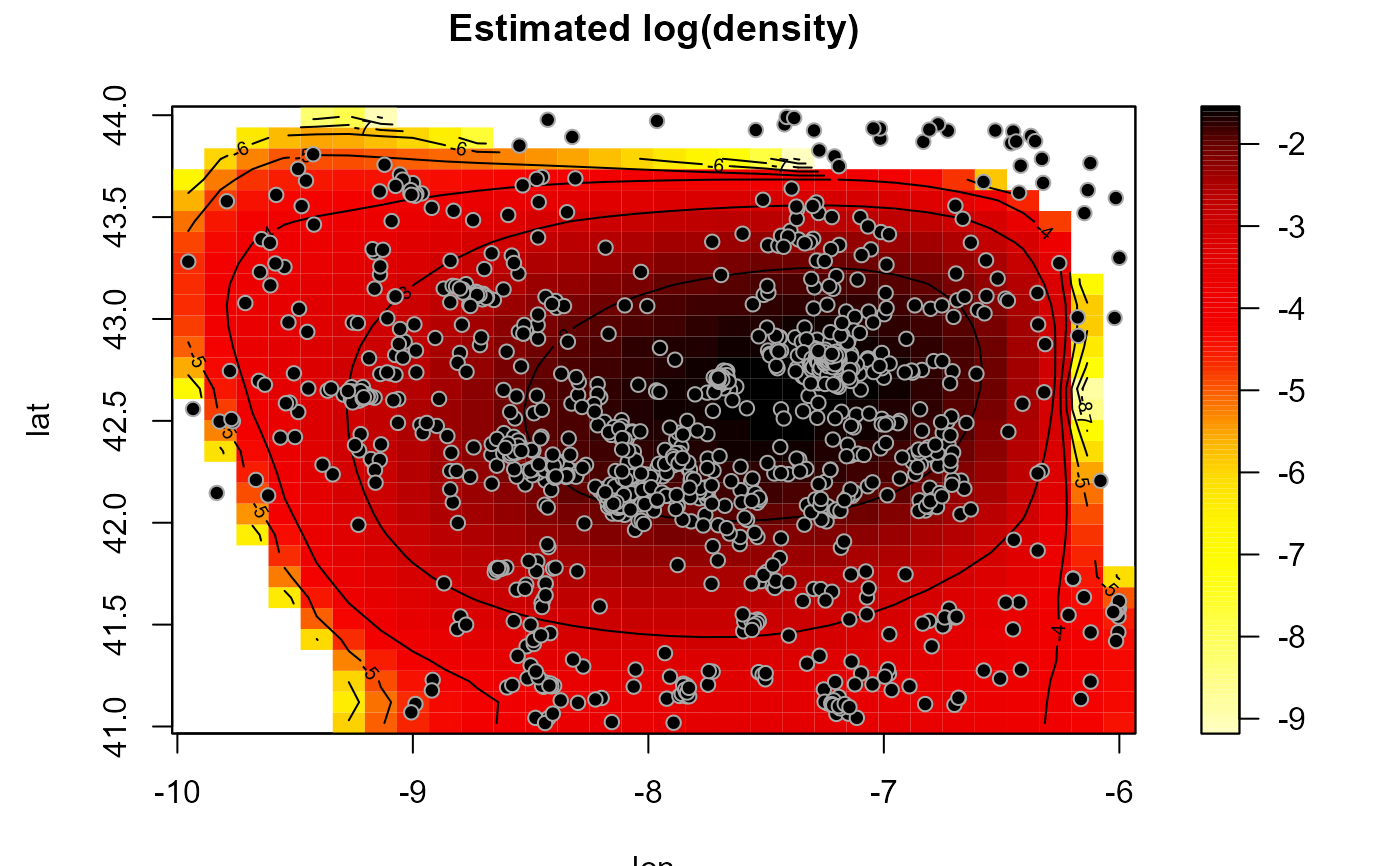Estimates a multidimensional probability density function (and its first derivatives) using local polynomial kernel smoothing of linearly binned data.
np.den(x, ...)
# Default S3 method
np.den(
x,
nbin = NULL,
h = NULL,
degree = 1 + as.numeric(drv),
drv = FALSE,
ncv = 0,
...
)
# S3 method for class 'bin.den'
np.den(x, h = NULL, degree = 1 + as.numeric(drv), drv = FALSE, ncv = 0, ...)
# S3 method for class 'bin.data'
np.den(x, h = NULL, degree = 1 + as.numeric(drv), drv = FALSE, ncv = 0, ...)
# S3 method for class 'svar.bin'
np.den(x, h = NULL, degree = 1 + as.numeric(drv), drv = FALSE, ncv = 0, ...)Arguments
- x
a (data) object used to select a method.
- ...
further arguments passed to or from other methods.
- nbin
vector with the number of bins on each dimension.
- h
(full) bandwidth matrix (controls the degree of smoothing; only the upper triangular part of h is used).
- degree
degree of the local polynomial used. Defaults to 1 (local linear estimation).
- drv
logical; if
TRUE, the matrix of estimated first derivatives is returned.- ncv
integer; determines the number of cells leaved out in each dimension. Defaults to 0 (the full data is used) and it is not normally changed by the user in this setting. See "Details" below.
Value
Returns an S3 object of class np.den (locpol den + bin den + grid par.).
A bin.den object with the additional (some optional) 3 components:
- est
vector or array (dimension
nbin) with the local polynomial density estimates.- locpol
a list with 6 components:
degreedegree of the polinomial.hbandwidth matrix.rmresidual mean (of the escaled bin counts).rsssum of squared residuals (of the escaled bin counts).ncvnumber of cells ignored (in each dimension).
- deriv
(if requested) matrix of first derivatives.
Details
Standard generic function with a default method (interface to the
fortran routine lp_data_grid), in which argument x
is a vector or matrix of covariates (e.g. spatial coordinates).
In this case, the data are binned (calls bin.den) and the local fitting
procedure is applied to the scaled bin counts (calls np.den.bin.den).
If parameter nbim is not specified is set to rep(25, ncol(x)).
A multiplicative triweight kernel is used to compute the weights.
If ncv > 1, estimates are computed by leaving out cells with indexes within
the intervals \([x_i - ncv + 1, x_i + ncv - 1]\), at each dimension i, where \(x\)
denotes the index of the estimation position.
References
Wand, M.P. and Jones, M.C. (1995) Kernel Smoothing. Chapman and Hall, London.
